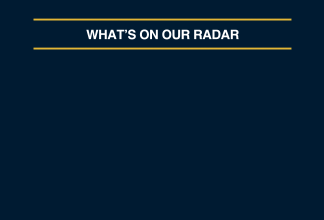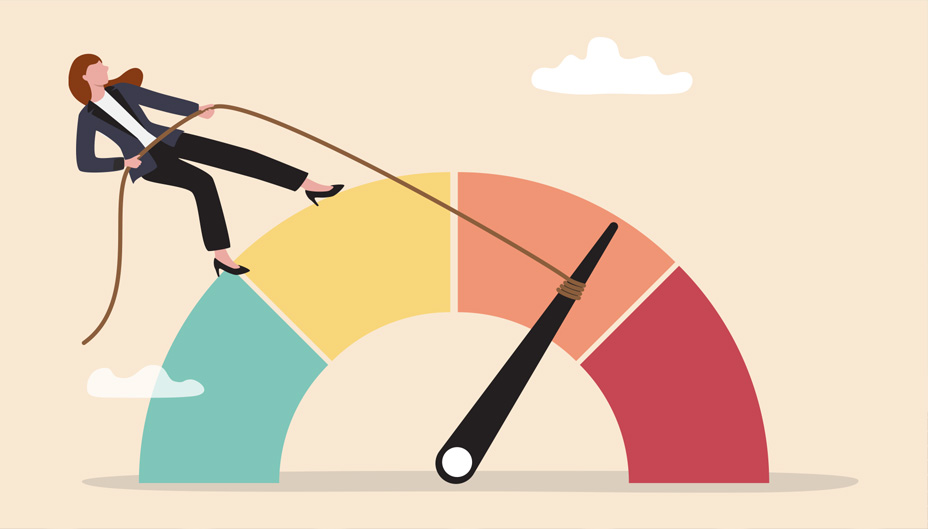Key Terms to Know During Market Volatility
Written by The Inspired Investor Team
Published on April 14, 2025
minute read
Share:
As the effects of U.S. President Donald Trump’s tariffs ripple through markets – and retirement accounts – around the world, it’s hard not to feel a little overwhelmed. In these turbulent times, the language used to describe what’s happening seems to be shifting as quickly as the markets themselves.
Deciphering the jargon that dominates the news in the middle of a crisis isn’t easy, but may help you make financial decisions in an uncertain environment. Below is a list of 8 terms worth knowing and what they mean.
Circuit breaker
A circuit breaker is a regulatory measure used to temporarily halt trading if stocks on an index collectively fall below a certain value. The idea is to prevent panic selling by providing a cooling-off period for investors to reassess their options amid extraordinary declines. Circuit breakers were introduced after the stock market crash of Oct. 19, 1987 and have been triggered only a handful of times since. The last time a sudden selloff triggered a market-wide circuit breaker in North America was in March 2020 – at the start of the COVID-19 pandemic – when it occurred four separate times.
Three levels of circuit breakers have been put into place:
|
Level of halt |
S&P 500 Index decline |
Length of halt before 3:25 p.m. |
at or after 3:25 p.m. |
|
Level 1 |
7% |
15 minutes |
trading continues |
|
Level 2 |
13% |
15 minutes |
trading continues |
|
Level 3 |
20% |
trading halts and does not resume for the remainder of the trading day |
trading halts and does not resume for the remainder of the trading day |
The VIX index
The Chicago Board Options Exchange Volatility Index, or VIX, gauges market expectations for volatility based on S&P 500 stock index option prices. It's sometimes called the "fear index." A low reading can indicate most investors don't expect much market volatility over the next 30 days, while a higher reading means investor anxiety may be on the rise. The VIX often rises when the S&P falls, making it a valuable source of insight into how much fear or stress other investors may be feeling in the current environment. While you can’t directly invest in the VIX, you can gain exposure to the index in other ways, such as through exchange-traded funds (ETFs).
Falling knife
“Falling knives” refers to stocks that are rapidly dropping in value. They are often used in the expressions “catching a falling knife” that means investing in a security that is quickly losing value and hoping it will rebound or “don’t catch a falling knife” which implies securities that are dropping in value and will likely continue to do so, even if they seem tempting to buy.
In contrast, “buy the dip” is a strategy where investors buy a security when its value is declining with the potential to make a profit when its value recovers. This strategy carries a similar risk of a potential loss if the decline is persistent.
Contagion
Financial contagion occurs when economic disruptions in one region or market quickly spread to other interconnected systems in a virus-like manner. Recent examples of contagion include the 2008 financial crisis – triggered by subprime mortgage defaults that sent shockwaves through global markets – and the COVID-19 pandemic, which caused a wave of cascading health and economic issues around the world.
Penguin tariffs
If you’ve been paying attention to the tariff talk, you’d know that President Trump imposed duties on almost every locale, including one only inhabited by penguins. Yes, you read that right – the Heard and McDonald Islands, an external Australian territory populated only by penguins and seals, was hit with a 10 per cent tariff on April 2. It’s unclear why this spot was targeted, but some thought perhaps people could use it as a loophole by sending products to the islands and then shipping them to other countries tariff free. One problem with that theory: penguins only know how to fish and waddle, not set up new supply chains.
Bear market
When financial markets experience a drop of at least 20 per cent from a recent high, they enter bear market territory. (A correction, another word that’s been used recently, is defined by the market falling at least 10 per cent from a recent high.) Bear markets are generally accompanied by a growing sense of investor pessimism amid a weakening economy. They can be triggered by a number of factors, including interest rate hikes, inflation or major geopolitical events, and can last weeks, months or even years. As bad as they sound, bear markets could potentially present enticing investment opportunities as the mass market selloff inevitably results in discounted prices on desirable assets. As more investors take note and begin buying again, the bear market comes to an end. Bull markets, the opposite of bear markets, occur when markets rise by 20 per cent or more, amid renewed investor optimism.
Anchoring bias
A form of cognitive bias, anchoring refers to our tendency to focus on a single, often arbitrary, piece of information when making important decisions. The source of the bias, or anchor, usually relates to the value of something we’re interested in; it’s also often the first piece of information we receive. Anchoring bias can be detrimental to our well-being, particularly if it causes us to cling to outdated or irrelevant information when making (or avoiding) important decisions. It also explains why some investors struggle to move on from an asset that experiences a significant drop in value. If a stock you purchased for $100 a share is now trading at $50, you might find it hard to sell because your mind is still hanging on to that higher price point as its true value. The best way to counter an anchoring bias is to be aware of what’s happening and update your early impressions with more research.
Protectionism
The U.S. has described its new tariff policy as a way to combat protectionist policies embraced by trading partners. Others see the tariffs as a sign the U.S. is ushering in its own protectionist age. Think of protectionism as a shield that limits another trading partner from competing in your market. If a government feels its local industries cannot compete with its trading partners, then to level the playing field, it could adopt policies, such as tariffs, to make importing goods from those partners more expensive. Of course, it’s not always about levelling the playing field. If an industry is important to a country – say defence or food production – governments may employ even higher protectionist measures to ensure the domestic industry remains the most attractive option to consumers.
RBC Direct Investing Inc. and Royal Bank of Canada are separate corporate entities which are affiliated. RBC Direct Investing Inc. is a wholly owned subsidiary of Royal Bank of Canada and is a Member of the Canadian Investment Regulatory Organization and the Canadian Investor Protection Fund. Royal Bank of Canada and certain of its issuers are related to RBC Direct Investing Inc. RBC Direct Investing Inc. does not provide investment advice or recommendations regarding the purchase or sale of any securities. Investors are responsible for their own investment decisions. RBC Direct Investing is a business name used by RBC Direct Investing Inc. ® / ™ Trademark(s) of Royal Bank of Canada. RBC and Royal Bank are registered trademarks of Royal Bank of Canada. Used under licence.
© Royal Bank of Canada 2025.
Any information, opinions or views provided in this document, including hyperlinks to the RBC Direct Investing Inc. website or the websites of its affiliates or third parties, are for your general information only, and are not intended to provide legal, investment, financial, accounting, tax or other professional advice. While information presented is believed to be factual and current, its accuracy is not guaranteed and it should not be regarded as a complete analysis of the subjects discussed. All expressions of opinion reflect the judgment of the author(s) as of the date of publication and are subject to change. No endorsement of any third parties or their advice, opinions, information, products or services is expressly given or implied by RBC Direct Investing Inc. or its affiliates. You should consult with your advisor before taking any action based upon the information contained in this document.
Furthermore, the products, services and securities referred to in this publication are only available in Canada and other jurisdictions where they may be legally offered for sale. Information available on the RBC Direct Investing website is intended for access by residents of Canada only, and should not be accessed from any jurisdiction outside Canada.
Explore More

Here’s What Every Canadian Should Know About Estate Planning
Insights from Leanne Kaufman to help you feel more confident as you plan
minute read

3 Things We're Watching This Week
What the Inspired Investor team is watching
minute read

What’s Driving the Recent Surge in Gold Prices
Here are some things to watch with the gold market
minute read
Inspired Investor brings you personal stories, timely information and expert insights to empower your investment decisions. Visit About Us to find out more.







